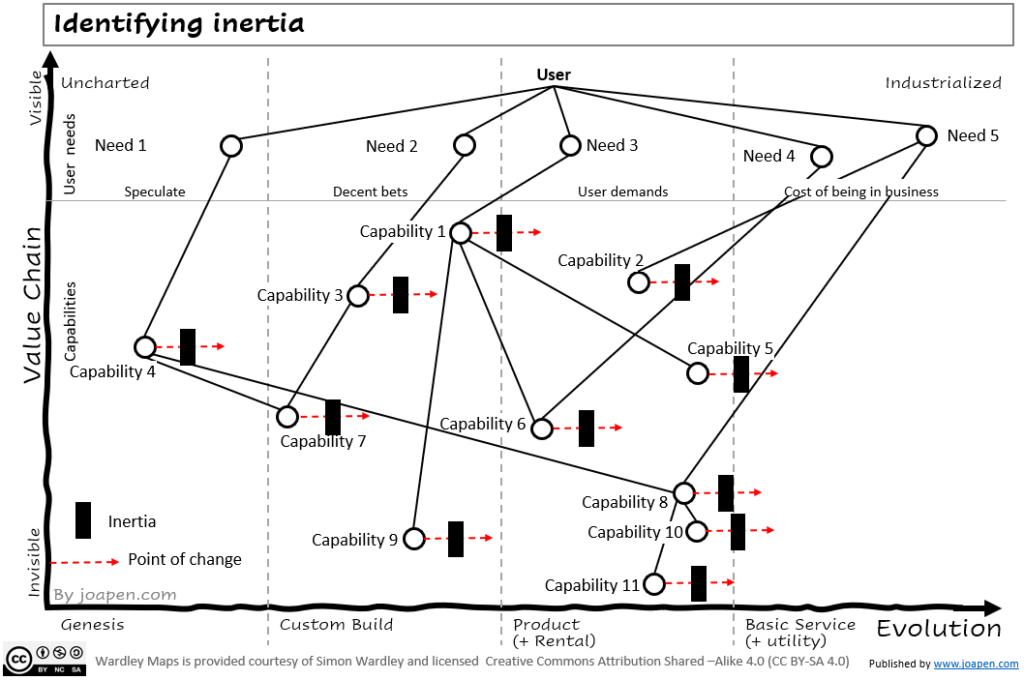Purpose
Many times, in a Wardley Map we look for the move in terms of evolution. This time the exercise is just the opposite: why components do not evolve.
The goal of the exercise is to identify the major reasons to have aversion to change (inertia) in a landscape (a map).
The exercise forces you to think in a different way and it enables to uncover blind spots.
Drawing, sharing & thinking
The steps to complete this practice are:
- Take a map you have already done.
- Add the inertia symbols to all relevant capabilities components.
- For all these capabilities: identify at least three reasons for not evolving.
- Once you have all data, look for common reasons, bottlenecks and deeper reasons.
Tips
Ideally this exercise should be done within a group of people.
If you have not the opportunity to do in group, at least have conversations individually with different people, so later you can group the all data together.
Try to go beyond of the superficial reasons and go deep in the reasons. Here the ability to ask questions to yourself about the reasons is key.
Sometimes to organize the data into a fishbone diagram is useful. Other times a table in a spreadsheet is enough.
Out of context example
This is how the map looks like when you add the inertia symbol.

Go beyond
This is the table created by Simon Wardley reviewing the 16 main types of inertia.

For each one of the identified reasons you have identified, to what is the main type of inertia is related to?
Feedback
- Is the exercise useful?
- Did you learn something?
- Anything to improve?
Many thanks, any constructive feedback is welcome.